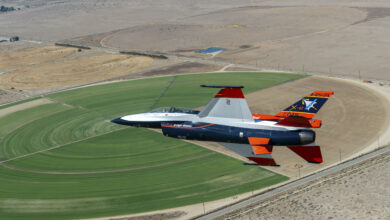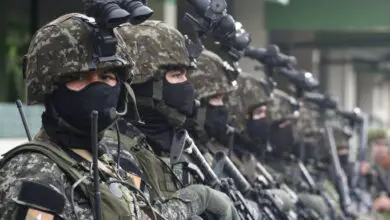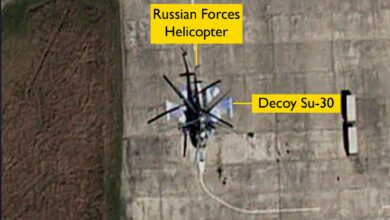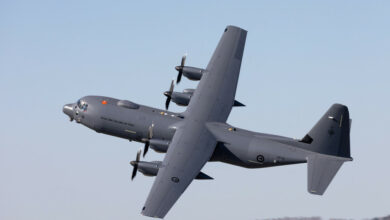Chinese J-20 Aircraft Receives Upgraded Domestic Engine
The Chinese J-20 fighter flew with a domestic engine for the first time in public this week, according to several media outlets.
Two of the Chengdu Aerospace Corporation aircraft executed aerobatic maneuvers at the 13th China International Aviation and Aerospace Exhibition in Zhuhai in Guangdong Province, Global Times reported.
Colonel Li Jikuan, commander of J-20 flight performance, revealed the development at a press conference. CNN identified the engine as the WS-10 developed by the Chinese to replace Russian engines fitted on earlier J-20s.
Expected to Enhance Aircraft Performance
Chinese military experts Global Times spoke to said that the development will “significantly” enhance the aircraft’s production and performance.
One commentator, Zhang Xuefeng, said that the new engine “will likely provide more powerful thrust to the J-20, which will help it in continued maneuvering in combat and also in supersonic cruise.”
He added that the engine’s serrated nozzles will enhance the aircraft’s stealth feature, “since such a design can reflect radar waves to some tight angles, and this will reduce the detection range of hostile radars on the J-20.”
The WS-10
China first flew the twin-engine aircraft in 2011. It was initially powered by the WS-10B, a variant of the WS-10 engine, as a stop-gap measure. The aircraft then entered production in late 2015, fitted with the Russian Saturn AL-31F engine.
In January, South China Morning Post reported that the country would start replacing the aircraft’s Russian engine with the WS-10C engine. The outlet also revealed that though the government has decided to use the indigenous engine, it remains a temporary choice for the aircraft.
WS-15 Unsatisfactory Performance
Referring to the engine initially planned to replace the Russian variant, the paper quoted a military source as saying, “The use of WS-10C to replace Russian engines was caused by the failure of WS-15 to pass its final evaluation in 2019.”
“The air force is not happy with the final results [of WS-15], demanding that engine technicians modify it until it meets all standards,” the source said, who spoke on condition of anonymity. He added that the People’s Liberation Army Air Force’s (PLAAF) long-term goal is to have an engine “matching the F119 engine used by the American F-22 Raptor.”
Russian Pressure to Purchase Su-35
Despite the domestically made engine being termed only as good as the Russian one, the PLAAF is in a hurry to replace the Russian engine. According to the insider, this is because of Moscow’s insistence that Beijing buy its Su-35 fighter aircraft despite Chinese reluctance.
“It’s impossible for China to rely on the Russian engine because Russia asked China to purchase more Su-35 fighter jets in exchange for the AL-31F engine deals,” he said.
“The key problem is – except for its longer combat range advantage – the radar, navigation system and other electronic components on the Su-35s are inferior to Chinese aircraft like the J-16 strike fighter.”
Pandemic Hampers Process
In developing the WS-15 engine, the source told the paper that the pandemic hampered the modification process last year.
The outlet wrote that even the WS-10C engine would not be fitted into the latest J-20B aircraft, which entered mass production in June last year because testing is expected to take at least another year.
The WS-10C is a modified version of the WS-10 engine used in the country’s fourth-generation J-10s and J-11s.
Notwithstanding the hurdles in the development of the WS-15, Chinese military aviation expert Andreas Rupprecht told Flight Global that the indigenous WS-10C is a “major breakthrough” as it will reduce Chinese dependence on Russian engines.











